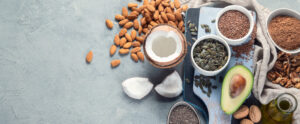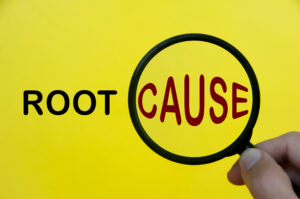Weight gain typically boils down to two reasons...
Reason #1: Too much food (even on a plant-based diet)
The lifestyle medicine docs we follow advise that we do NOT to count calories or points, or weigh/measure our foods; the main reason is because plant-based eating isn't a typical short-term "diet" of restriction, but rather a lifestyle to be practiced and enjoyed for life.
The advice is to eat when you're hungry, but stop when you're comfortably full. And therein lies the key. Stop before you're stuffed. STOP when you are full.
However, the principle of 'calories in, calories out' still applies to the whole food, plant-based lifestyle - because overeating ANY type of food will sabotage our efforts to lose or maintain a healthy weight. Don't be obsessed with calorie counting...but do tune in to recognize your true hunger signals; eat when you are hungry, and STOP when you're comfortably full.
Check out this article: Is it hunger, or cravings?
Keeping a food journal of everything you consume (both food and beverages) for several days is another good way to become aware of how much you're actually eating/ grazing/ snacking.
Meal planning is also important. We tend to overeat when we're ravenous; and when there's nothing prepared in the fridge or pantry, we tend to grab anything and everything just to get something in our bellies. Here are some menu planning tips and a 21-day meal plan which may be of help.
NOTE: If food addiction or emotional eating are triggering you to overeat, getting to the root cause of those behaviors will be instrumental. Feel free to contact me for more resources.
Reason #2: The wrong foods (even on a plant-based diet)
This is a trap I see many plant-based eaters fall into. If weight loss and/or health improvement are your major goals, avoiding or limiting high fat plant foods such as avocado, nuts, nut butters, seeds and tahini, olives, and coconut is important. If you do choose to consume them, use them very sparingly, as condiments only. (Note: If you have heart disease, refer to Dr. Esselstyn's book for more advice about avoiding fats.) And of course - no oils!
Oils are 100% pure fat and should be eliminated in all cases. It's easy to pack on a few pounds every month by just consuming oils which add no bulk to your food - only calories and fat (not to mention the health problems they contribute to.) Read your labels and avoid products which contain oils and/or hydrogenated oils.
Focus on foods that are low in calorie density (and thereby lower in fat, as well).
Avoid refined grains (do you know how to spot them? This course will help!) Refined grains are devoid of any fiber and can spike our blood sugar.
Make water your first beverage of choice. Avoid sugary drinks, sodas, lattes, and power drinks; in other words, don't drink your calories.
Bottom Line: Focus on low-fat, high fiber, calorie dilute whole plant foods; use higher fat plant foods as condiments. Drink lots of water. Be mindful of when you're eating: eat when you're actually hungry, and stop when your comfortably full.
********************************************
Learn MORE tips in this free webinar: 3 Food Mistakes that Lead to Painful Joints, Extra Pounds, and Health Problems the Doctors Aren't Solving.
Get a signed copy of my book: The "Plan A" Diet: Combining Whole Food, Plant Based Nutrition with the Timeless Wisdom of Scripture.









